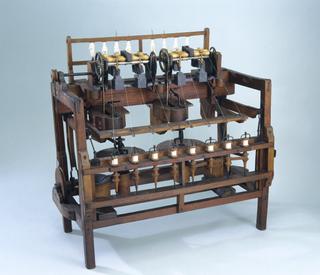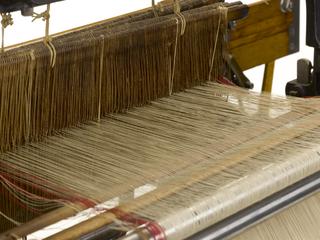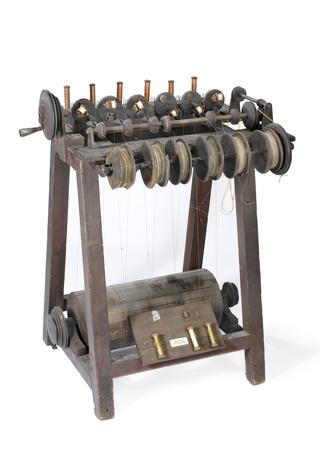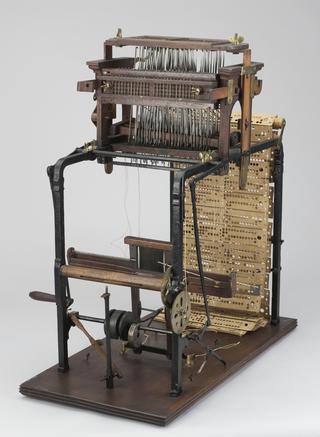Stocking knitting frame by Cooper Corah and Sons, Leicester, England, about 1777.
This knitting machine, although made in about the 1770s, is similar to the original frame invented by the Rev. William Lee in 1589.
There is a horizontal row of needles with hooks or beads, which can be depressed by the pressure bar, so that the points of the needles enter grooves in the shanks to form closed hooks. Between the needles are notched steel plates called sinkers. The alternate sinkers are in two sets; the jacks, which can be raised or lowered individually and the leads, which move up or down together.
The thread is placed over the needles and the jack sinkers are dropped successively to form loops over every second needle. The lead sinkers are then lowered and the jacks raised together a little to divide, double and equalise the loops between each pair of needles. The sinkers are then brought forward to push the loops under the beards. The presser is brought down to close the beards. The sinkers are raised and brought forward to land the previous course of loops on the beards. The presser is raised and the sinkers continue forward to knock over the fabric from the needles onto the new course of loops. The sinkers are again lowered and moved back, taking with them the fabric, now suspended from the last course, clear of the beads. The sinkers are then raised ready for the next cycle of operations, each of which results in the addition of a course of loops to the fabric.





